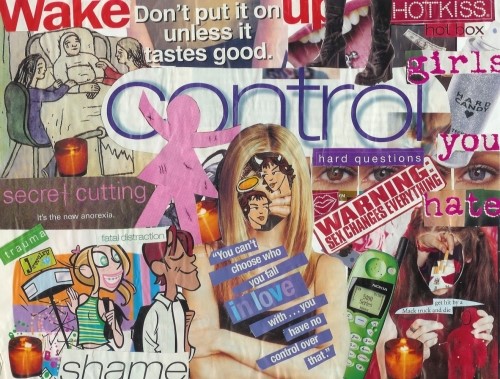In a world where stress, anxiety, and mental health issues are prevalent, finding effective methods to heal and alleviate these conditions is of utmost importance. While traditional therapeutic approaches such as counseling and medication have their merits, an increasingly popular and creative alternative has emerged: art therapy. Harnessing the power of artistic expression, art therapy offers individuals a unique and transformative way to heal their mental illnesses. In this article, we will delve into the history of art therapy, explore multiple strategies for practicing it, and provide tips for making the best purchases when it comes to art supplies.
History
To truly understand the profound impact of art therapy, we must first explore its roots and origins. The concept of using art for therapeutic purposes can be traced back to ancient times, where art was recognized as a means to express emotions and heal the soul. Ancient civilizations such as the Egyptians, Greeks, and American Indians used art as a form of spiritual healing, connecting the physical, emotional, and spiritual aspects of well-being.
However, it wasn’t until the 20th century that art therapy as a formalized discipline started to gain recognition. The emergence of art therapy can be attributed to several key factors and influential figures.
Adrian Hill: The Power of Art during Illness
One significant contributor to the development of art therapy was Adrian Hill, a British artist. In the early 1940s, Hill fell critically ill with tuberculosis, requiring long periods of bed rest. During his recovery, he discovered the therapeutic benefits of art. He found that engaging in artistic activities not only alleviated his physical pain but also provided solace for his troubled mind. Hill’s personal experience led him to explore the potential of art as a healing tool, sparking his interest in promoting the therapeutic aspects of art.
Margaret Naumburg: Integrating Art and Psychotherapy
Another influential figure in the history of art therapy is Margaret Naumburg, an American psychologist. Naumburg was one of the pioneers who recognized the potential of art as a therapeutic intervention. In the 1940s, she developed a method known as “psychodynamic art therapy,” which integrated psychoanalytic principles with artistic expression. Naumburg believed that art had the power to access the unconscious mind and facilitate the exploration of deeply rooted emotions and conflicts.
The Recognition of the Creative Process
During the mid-20th century, the field of psychiatry started to acknowledge the importance of creativity and self-expression in the healing process. Mental health professionals began to recognize that traditional verbal therapies alone might not be sufficient to address the complex and nuanced nature of psychological distress. Art therapy emerged as a complementary approach that provided individuals with an alternative means of communication, allowing them to express their innermost thoughts and feelings through artistic creation.
As interest in art therapy grew, organizations and institutions dedicated to the field began to emerge. The American Art Therapy Association (AATA) was founded in 1969, providing a platform for art therapists to connect, share knowledge, and advocate for the profession. Similar organizations were established in other countries, leading to the recognition and professionalization of art therapy as a distinct discipline.
Today, art therapy is widely recognized as an effective therapeutic approach, utilized in various settings such as hospitals, mental health clinics, schools, and community centers. Its foundations in psychology, psychotherapy, and the arts make it a unique and valuable form of treatment for mental health issues.
Strategies for Practice
Art therapy encompasses various techniques and strategies that enable individuals to express their emotions, process traumatic experiences, and explore their inner selves. Let’s explore some of the most effective strategies:
Free Art Expression

One commonly used method is free art expression, where individuals are encouraged to let their creativity flow without any specific guidelines or restrictions. This unrestricted form of artistic expression provides a safe space for individuals to explore their thoughts and emotions, often leading to valuable insights and breakthroughs.
Guided Imagery
Another effective strategy in art therapy is the use of guided imagery. Through guided imagery, individuals are prompted to create visual representations of their thoughts, memories, or aspirations. By externalizing internal experiences, individuals gain a fresh perspective on their emotions and can begin to navigate through them in a healthier manner.
Collage Therapy

Collage therapy is yet another popular technique in art therapy. By selecting and arranging images from magazines or other sources, individuals can create collages that reflect their desires, fears, and aspirations. Collage therapy allows for the exploration of subconscious thoughts and feelings, often leading to a deeper understanding of oneself and the issues at hand.
Impact
Art therapy has shown promising results in improving mental health and well-being. Research studies have demonstrated its positive effects on various aspects of mental illness. Here are some data and specific numbers that highlight its impact:
Reducing Symptoms of Depression and Anxiety
A meta-analysis conducted by Stuckey and Nobel in 2010 examined the effects of art therapy on individuals with mental health disorders. The study included 15 randomized controlled trials involving a total of 711 participants. The analysis found that art therapy significantly reduced symptoms of depression and anxiety, with effect sizes ranging from moderate to large. The findings supported the effectiveness of art therapy as a complementary treatment for these common mental health conditions.
Enhancing Emotional Resilience
Research by Kaimal, Ray, and Muniz in 2016 explored the effects of art-making on stress-related hormones in college students. The study involved 39 participants and measured cortisol levels before and after a 45-minute art-making session. The results showed a significant decrease in cortisol levels, indicating a reduction in stress. Additionally, participants reported increased positive mood and enhanced emotional resilience. These findings suggest that art therapy can be a valuable tool for managing stress and promoting emotional well-being.
Improving Quality of Life for Cancer Patients
In a study conducted by Thyme, Sundin, Wiberg, and Oster in 2009, art therapy was found to have a positive impact on the quality of life of cancer patients. The study included 41 participants undergoing chemotherapy treatment. The participants engaged in weekly art therapy sessions for a period of 10 weeks. The results showed significant improvements in psychological well-being, as well as reductions in distress levels. Art therapy provided an outlet for self-expression, helping the participants cope with the challenges of their illness and enhance their overall quality of life.
Tips for Selecting Art Supplies
When engaging in art therapy, having the right art supplies can greatly enhance the experience. Here are some tips for making the best purchases when it comes to art supplies:
- Quality matters: Invest in high-quality art supplies that are durable and offer vibrant colors. Cheap materials may limit your creativity and frustrate your artistic process.
- Experiment with different mediums: Explore a variety of artistic mediums such as paints, pastels, pencils, and clay. Each medium offers unique possibilities for self-expression, so don’t be afraid to experiment and find what works best for you.
- Consider the therapeutic aspect: Certain art supplies, such as watercolors or oil pastels, can have a calming and soothing effect on the mind. Take into account the therapeutic benefits of different materials when making your purchases.
- Safety first: If you’re using art therapy with children or individuals with specific needs, ensure that the art supplies you choose are non-toxic and safe for all ages.
- Personalize your supplies: Customize your art supplies to fit your preferences and artistic style. Consider selecting colors and tools that resonate with you on a personal level, as this can enhance your engagement and connection to the creative process.
Conclusion
Art therapy has a rich history and has evolved into a recognized and effective form of mental health treatment. With its diverse strategies and approaches, it offers individuals a creative and transformative way to heal and manage their mental illnesses. The impact of art therapy is supported by research, demonstrating its positive effects on reducing symptoms of depression and anxiety, enhancing emotional resilience, and improving the quality of life for individuals facing challenges such as cancer. By selecting the right art supplies and embracing the artistic journey, individuals can unlock the healing power of art therapy and embark on a path of self-discovery, growth, and improved mental well-being. So, let your creativity flourish and let art therapy guide you towards a healthier and happier state of mind.
References
Kaimal, G., Ray, K., & Muniz, J. (2016). Reduction of cortisol levels and participants’ responses following art making. Art Therapy: Journal of the American Art Therapy Association, 33(2), 74-80.
Malchiodi, C. A. (Ed.). (2012). Handbook of art therapy (2nd ed.). Guilford Press.
McNiff, S. (2016). Art heals: How creativity cures the soul. Shambhala Publications.
Rubin, J. A. (2019). Art therapy: An introduction (3rd ed.). Routledge.
Stuckey, H. L., & Nobel, J. (2010). The connection between art, healing, and public health: A review of current literature. American Journal of Public Health, 100(2), 254-263.
Thyme, K. E., Sundin, E. C., Wiberg, B., & Oster, I. (2009). Individual brief art therapy can be helpful for women with breast cancer: A randomized controlled clinical study. Palliative & Supportive Care, 7(1), 87-95.

